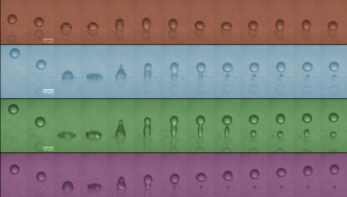Physicists in the US claim to have observed nuclear fusion in a table-top experiment but their work has met a hostile reaction from other researchers. Rusi Taleyarkhan of the Oak Ridge National Laboratory and colleagues stand by their claim that deuterium atoms fused to make tritium when gas bubbles in deuterated acetone collapsed to generate temperatures of millions of degrees in ‘sonoluminescence’ experiments (R Taleyarkhan et al 2002 Science 295 1868). But two other physicists at Oak Ridge have challenged the results after failing to reproduce them in a separate experiment. Taleyarkhan and co-workers in turn claim that the duo failed to calibrate their instruments properly. Other sonoluminescence researchers are sceptical, but they admit that the effect would be a major discovery if it proves to be real.

In sonoluminescence, pulses of light are emitted by bubbles that are forced to expand and collapse by sound waves. Physicists have long speculated that the considerable compression forces inside the bubbles when they collapse could be large enough to spark nuclear reactions. If this was achieved, it could lead to an endless source of ‘clean’ energy.
Taleyarkhan and co-workers at Oak Ridge, the Rensselaer Polytechnic Institute and the Russian Academy of Sciences claim to have seen the tell-tale decay signals of tritium – a radioactive isotope of hydrogen – in bubbles formed in acetone in which the ordinary hydrogen atoms have been replaced by deuterium atoms (C3D6O). In the experiments the bubbles are created by energetic neutrons, and the acetone vapour in the bubbles is forced to expand and then collapse by an acoustic signal.
The researchers also report evidence of another fusion reaction between two deuterium atoms. They say that the bubbles emitted neutrons with energies of 2.45 MeV, the energy that neutrons are emitted with when deuterium atoms fuse to create helium-3. Taleyarkhan and colleagues went on to calculate that temperatures of a million or even ten million degrees – the temperature at the Sun’s core – must exist inside the bubbles for these reactions to proceed.
But Dan Shapira and Michael Saltmarsh of Oak Ridge report that they failed to detect convincing evidence for either the tritium or the neutrons that the fusion reaction would have generated. The pair observed far fewer neutrons – at least three orders of magnitude fewer – than the fusion of deuterium into helium-3 should generate. They also point out that their neutron detector was much more efficient than the device used by Taleyarkhan’s group.
Taleyarkhan and colleagues dismiss these results, and state that Shapira and Saltmarsh misinterpreted their own results because they failed to calibrate their detector properly. Neither the report by Shapira and Saltmarsh nor the rebuttal by Taleyarkhan’s group are being endorsed by Science.
Mathias Fink of the Laboratory of Waves and Acoustics at the Université Denis Diderot in Paris thinks the work by Taleyarkhan’s group is very exciting. “Many of us working in the field of cavitation have speculated that ‘sonofusion’ could occur, but few of us expected to see it so soon,” he told PhysicsWeb. Fink believes the work is a first step towards a fusion source but emphasizes that a lot of work remains to be done.
But Lawrence Crum, director of the Center for Industrial and Medical Ultrasound at the University of Washington, is sceptical about the claims. He dismisses the idea that the technique could become a viable energy source, but concedes that the discovery would have far-reaching consequences for science if it proves to be true.
Detlef Lohse, a researcher in sonoluminescence at the University of Twente in the Netherlands is also unconvinced. “I am very surprised this paper was published,” he told PhysicsWeb. “The temperature they are claiming is grossly overestimated – the gas inside the bubble would heat up, but most of the energy would be eaten up by vibration, rotation and chemical reactions”.
Other commentators – mindful of the much-hyped but ultimately disproved ‘cold fusion’ claims of the late 1980s – agree that Science has gone out on a limb by publishing the paper by Taleyarkhan’s group.



